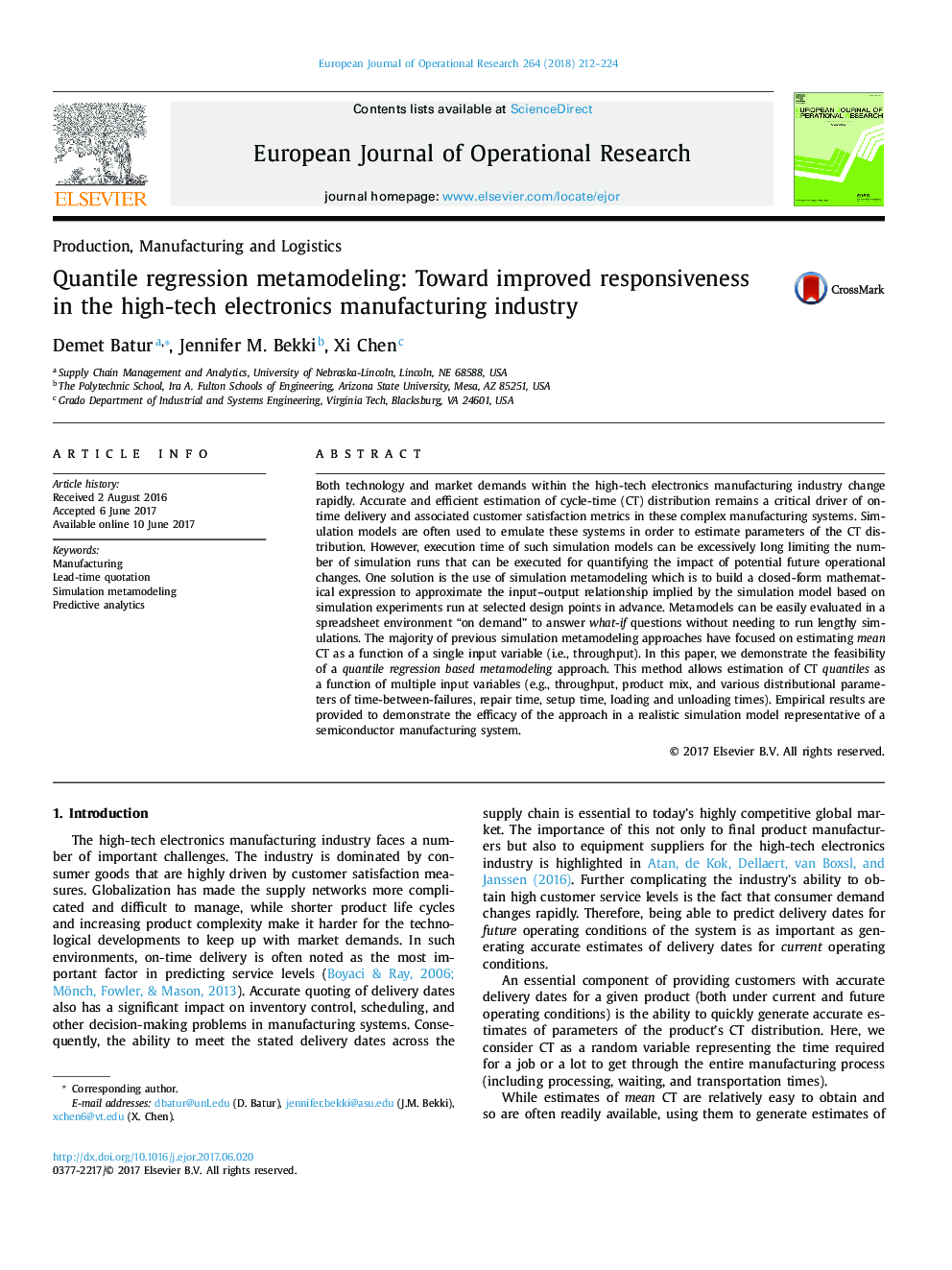| Article ID | Journal | Published Year | Pages | File Type |
|---|---|---|---|---|
| 4959452 | European Journal of Operational Research | 2018 | 13 Pages |
â¢A simulation metamodeling procedure is proposed for the quantile measure.â¢Polynomial metamodeling functions are built using the quantile regression method.â¢Quantiles of cycle time distribution can be estimated from these metamodels.â¢Quantile metamodels can be used in production planning for lead-time quotation.â¢A semiconductor manufacturing system example is used as a test-bed.
Both technology and market demands within the high-tech electronics manufacturing industry change rapidly. Accurate and efficient estimation of cycle-time (CT) distribution remains a critical driver of on-time delivery and associated customer satisfaction metrics in these complex manufacturing systems. Simulation models are often used to emulate these systems in order to estimate parameters of the CT distribution. However, execution time of such simulation models can be excessively long limiting the number of simulation runs that can be executed for quantifying the impact of potential future operational changes. One solution is the use of simulation metamodeling which is to build a closed-form mathematical expression to approximate the input-output relationship implied by the simulation model based on simulation experiments run at selected design points in advance. Metamodels can be easily evaluated in a spreadsheet environment “on demand” to answer what-if questions without needing to run lengthy simulations. The majority of previous simulation metamodeling approaches have focused on estimating mean CT as a function of a single input variable (i.e., throughput). In this paper, we demonstrate the feasibility of a quantile regression based metamodeling approach. This method allows estimation of CT quantiles as a function of multiple input variables (e.g., throughput, product mix, and various distributional parameters of time-between-failures, repair time, setup time, loading and unloading times). Empirical results are provided to demonstrate the efficacy of the approach in a realistic simulation model representative of a semiconductor manufacturing system.
